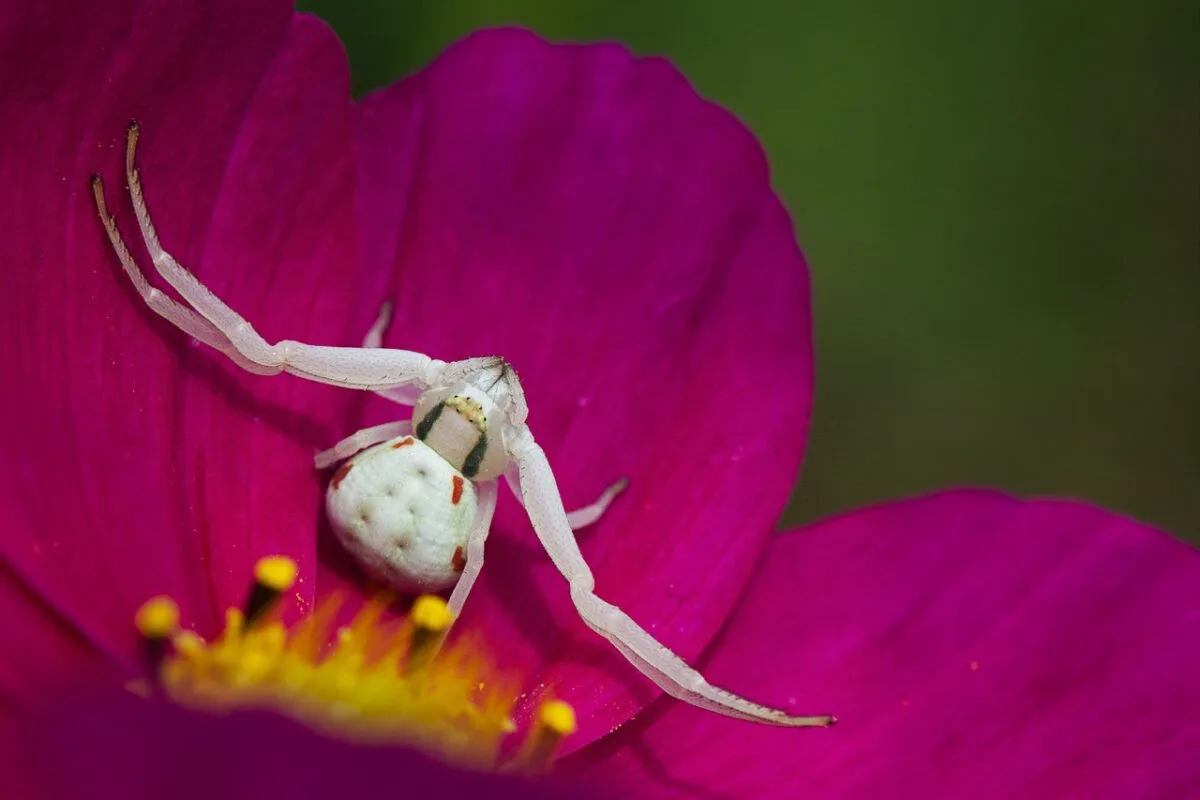Crab spiders are an intriguing type of spider that can be found worldwide. They’re called “crab” spiders because they look like crabs with long legs bent at a sharp angle. These spiders can live in many places, like forests, fields, and gardens.

In this article, you will find lots and lots of information about their biology, behavior, and role in the environment. Even if you have arachnophobia, you are sure to be impressed by these tiny creatures.
Jump to any section straight away below:
Physical Characteristics of Crab Spiders
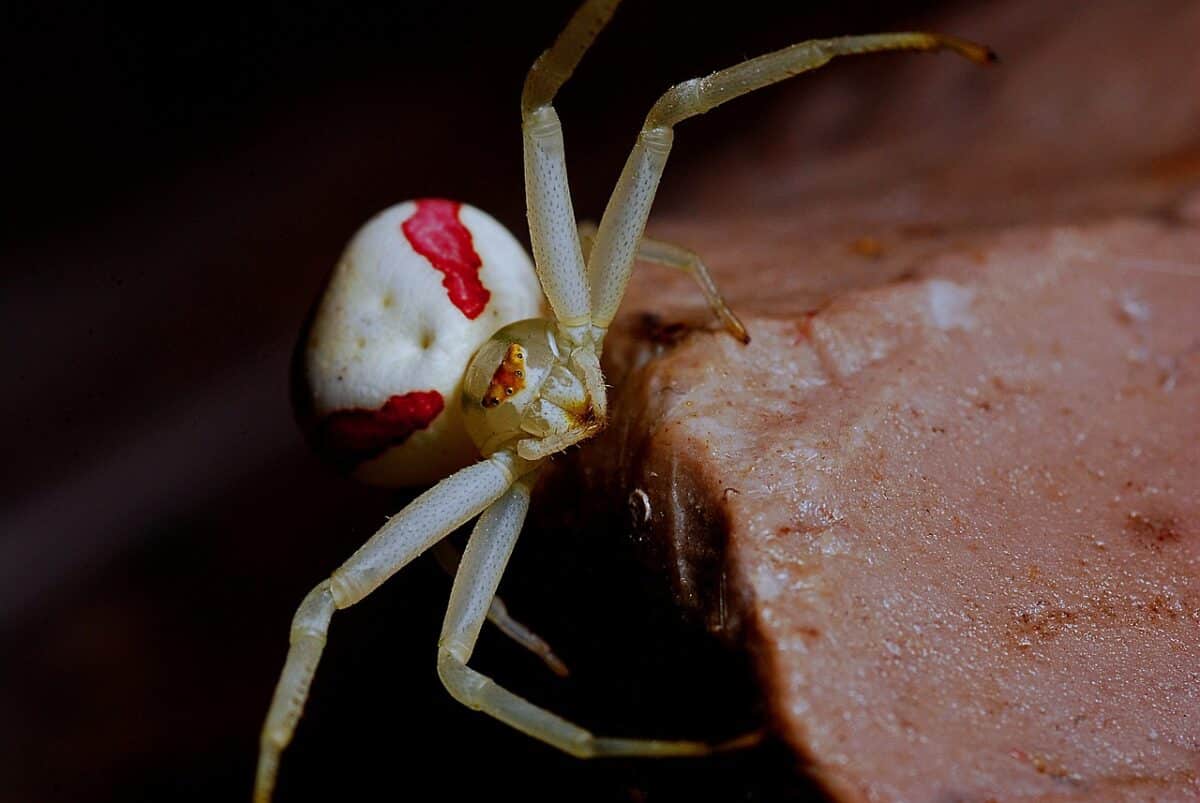
Body Shape and Size
Crab spiders range in size from 0,1 – 1 inch in length with a flat body, making them relatively small compared to other spider species.
Chelicerae
Crab spiders have impressive chelicerae, or jaws, which are used to catch and grasp their prey.
Eyes
Crab spiders have eight large eyes positioned at the front of their head. These eyes provide excellent vision, allowing the spiders to locate their prey and navigate their environment.
Legs
Crab spiders have long, strong legs covered in spikes, allowing them to grip their prey and climb on surfaces. Their legs are super helpful for camouflage, as they help the spiders blend in with their surroundings.
Coloration
Crab spiders come in various colors, including white, yellow, brown, green, and black. Due to their varied coloration, they blend in with their surroundings in their specific habitat and remain hidden from predators and prey.
All in all, their flat body shape, large chelicerae, excellent vision, and long, spiny legs make them effective hunters and help them avoid predators.
Types of Crab Spiders
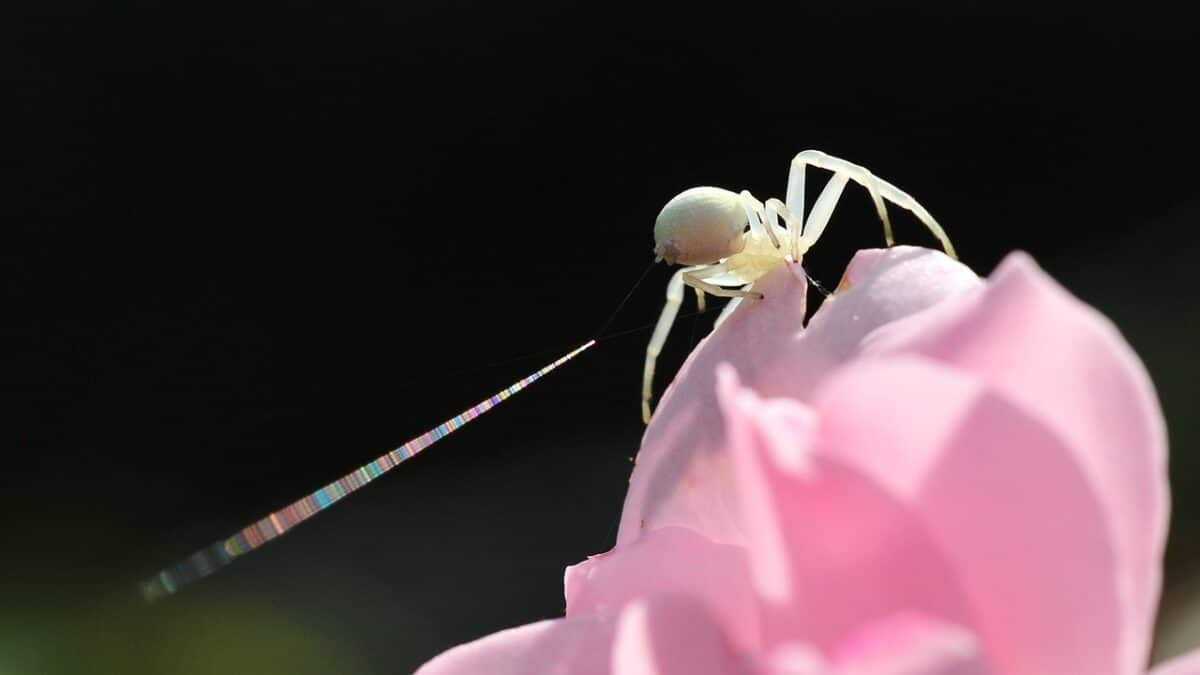
#1 Flower Crab Spider (Misumena vatia)
Flower Crab Spiders, also known as Misumena vatia, are a type of spider found in different regions of the world. They are known for living on flowers and using an ambush-hunting technique to catch their prey.
These spiders are often small or medium-sized and have long, slim legs. Their flat bodies let them blend in with their surroundings, making them tricky for predators to spot. Flowers Crab Spiders come in various colors like white, yellow, green, and brown, which helps them camouflage with the flowers (their hunting grounds.)
These spiders can be found in gardens, meadows, and woodlands and prey on small insects like flies, bees, and butterflies. They use an ambush hunting technique, waiting patiently for their prey to come near before striking with their powerful legs. Flower Crab Spiders can change color to blend in with their environment and become more effective hunters.
Flower Crab Spiders are a unique and fascinating spider species, playing an essential role in controlling populations of small insects and other spiders in their ecosystems. They are worth learning more about whether you’re a spider enthusiast or simply interested in the natural world.
#2 Running Crab Spider (Philodromidae)
The Running Crab Spider, also called the Philodromidae, is a spider that lives in different parts of the world, such as North America, Europe, and Asia. These spiders are known for their agility and fast movements.
Running Crab Spiders are usually small to medium-sized, ranging from 0.2 – 0.6 in body length. Their bodies are flattened bodies with long, thin legs and a distinct crab-like look that gives them their name. They have various colors like brown, gray, and white; some species have markings on their abdomen.
Typically, they live in grasslands, gardens, and woodlands, where they hunt for small insects and other spiders. They run across leaves and stems and use their quick movements to catch their prey. Running Crab Spiders eat small insects such as flies, ants, and bees.
These spiders are known for their agility and quick movements, which allow them to chase after their prey. They can move in any direction, even backward, making them challenging to catch. These guys can also change color, blending in with their environment and becoming even more efficient at catching prey.
Like all spiders, this creature plays an important role in their ecosystem, helping to control populations of small insects and other spiders.
#3 Green Crab Spider (Misumessus oblongus)
The Green Crab Spider, also known as the leaf spider, is a type of spider known for its green color, enabling it to blend in with its surroundings.
They are ambush predators, lying low and waiting for their prey, consisting of small insects and other spiders. The green crab spider is also known for its ability to change color, which enables it to adapt to its environment and become even more effective at capturing its prey.
Habitat of Crab Spiders
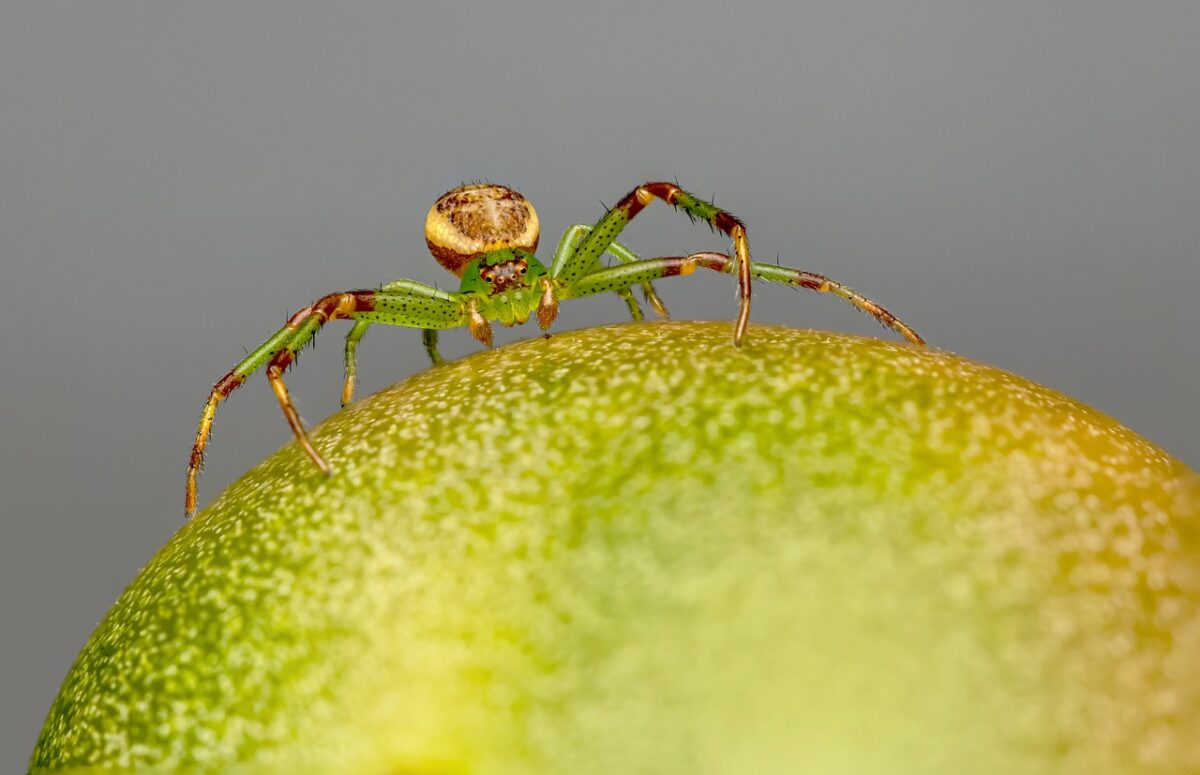
Crab spiders prefer environments with covers, such as leaves and flowers, and can often be found in the same place for long periods. Regardless of their habitat, they can effectively hunt and avoid predators.
Global Distribution
Crab spiders are present worldwide and are adaptable to different habitats. They can live in many places like forests, fields, gardens, and cities.
Preferred Habitats
Crab spiders prefer habitats that provide them with cover, such as leaves and flowers. They are often found in these environments for long periods, as they can blend in with their surroundings and remain hidden from both prey and predators.
Forest Environments
Crab spiders can be found on the ground or in trees and shrubs in forest environments. They often use their long legs to climb and position themselves on leaves, where they can ambush passing insects.
Fields and Gardens
Crab spiders are also common in fields and gardens, where they can use vegetation to hide from both prey and predators. They oftentimes sit on flowers, waiting to ambush passing insects.
Urban Environments
Crab spiders are also present in urban environments, where they can use man-made structures to hide from prey and predators. You can often spot them on buildings, walls, and gardens, where they can use the vegetation for cover.
Diet and Feeding Habits of the Crab Spider
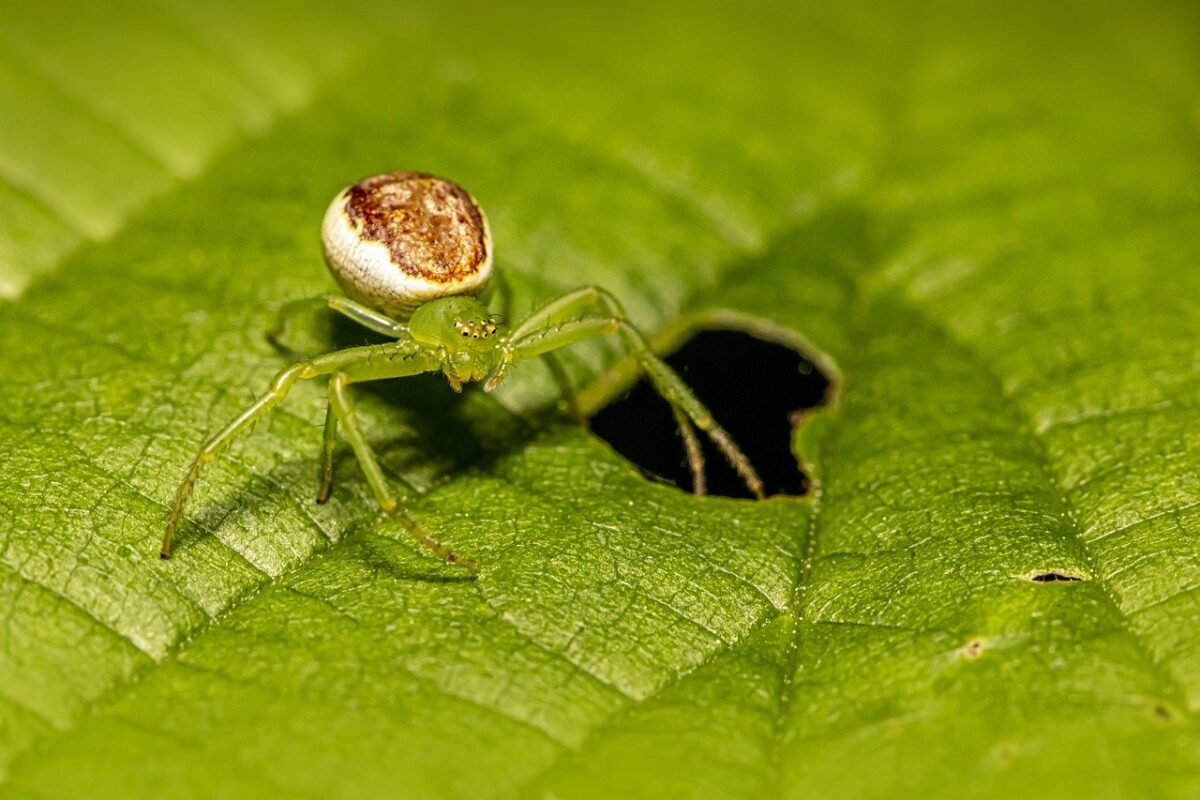
Prey
Crab spiders are predators that love to eat insects and small arthropods. They mostly hunt for flies, bees, butterflies, and other tiny bugs in their surroundings.
Slow Metabolism
Interestingly, crab spiders have a very slow metabolism, which means they don’t need to eat frequently. This allows them to survive without food for long periods of time, which makes them well-suited to their environment.
Hunting Techniques
Crab spiders use their long legs and sharp chelicerae to grab their prey and inject venom to immobilize it. The venom also liquefies the prey’s internal organs, making it easier for the spider to feed.
Venom
The venom produced by crab spiders is not dangerous to humans but definitely harms their prey. This venom quickly immobilizes the prey, allowing the spider can feed without fear of being attacked.
Feeding Behavior
Crab spiders are solitary hunters and feed on their prey alone. They use their long legs to position themselves strategically, such as on a leaf or flower, and wait for their prey to pass. Once their prey is within reach, they use their chelicerae to grab and inject their venom.
Role In Ecosystems
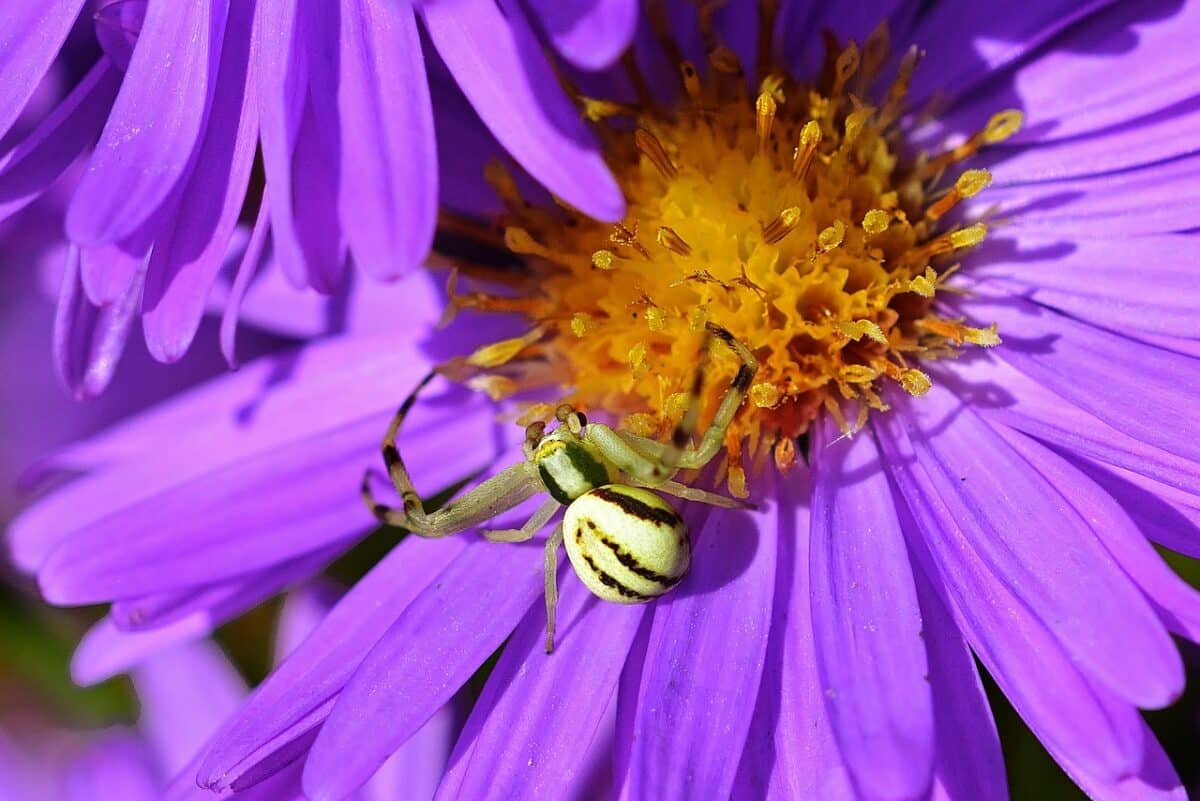
It is vital to note that crab spiders play a significant role in the ecosystems they feature in by controlling the population of insects. Using their hunting techniques, they help to maintain a balance in the environment and prevent the overpopulation of insects.
Predation On Pest Species
Crab spiders are important predators in the ecosystem and feed on many insects considered pests. It includes insects such as aphids, flies, and mosquitoes, which can cause damage to crops and gardens.
Role In Pollination
This species plays an essential role in pollination as they often come into contact with flowers while hunting. They can transfer pollen, helping to pollinate plants and ensuring their survival.
Mating Habits of the Crab Spider
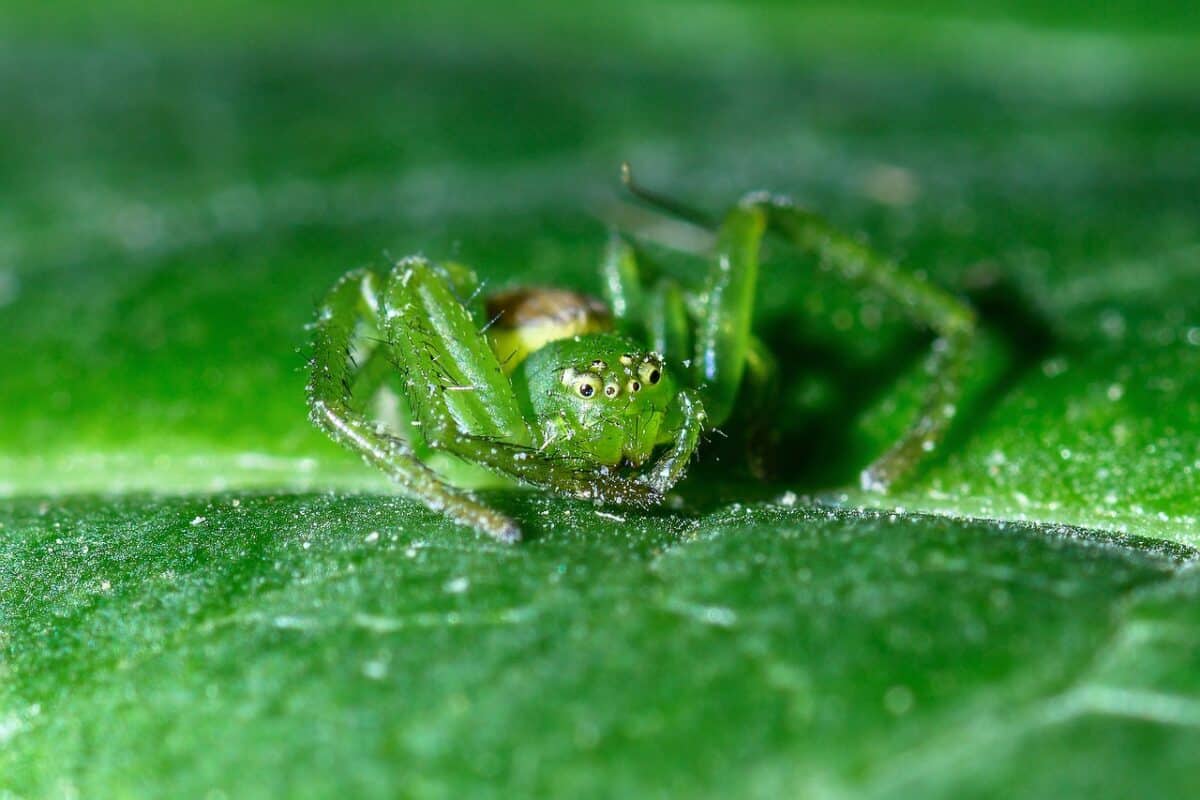
Timing of Mating: Crab spiders mate during the spring and early summer.
Egg Laying: Females lay their eggs in a silk sac after mating.
Guarding and Feeding: The females protect their eggs and offspring, feeding them with any insects that come near.
It is the female crab spider who takes on the responsibility of protecting and providing for her offspring. This is common behavior in the spider world. Usually, the male spider dies after mating, and the female is left to care for her eggs and young on her own.
Social Behaviors of the Crab Spider
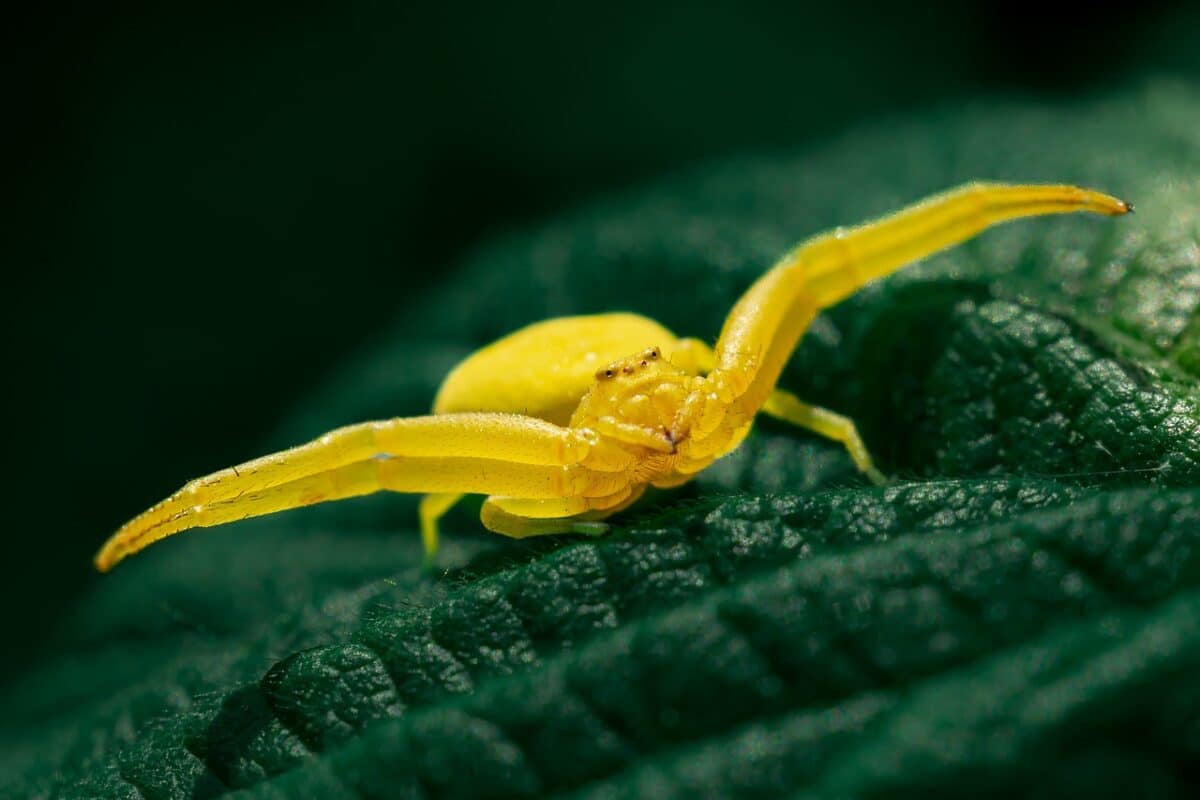
- Solitary Nature: Crab spiders are solitary animals and do not form social groups.
- Territorial: They are territorial and will defend their hunting ground from other spiders.
- Avoidance of Confrontation: Crab spiders do not actively seek out other spiders to attack and usually avoid confrontations.
They can distinguish between other spiders that threaten their hunting ground and those that are not and will react accordingly to defend their territory. This behavior helps to maintain a balance in the ecosystem by preventing overcrowding and competition for food and resources.
Adaptations and Survival Strategies
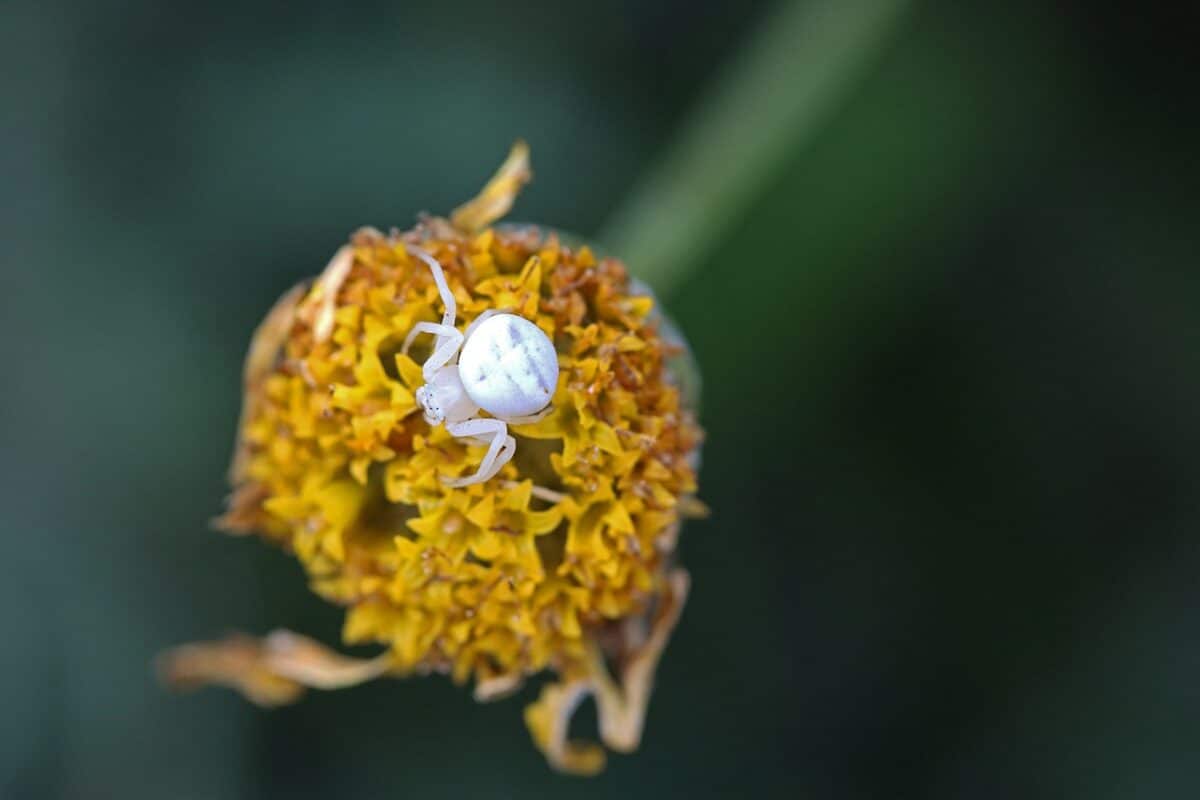
Camouflage and Mimicry
Crab spiders are well-known for their ability to camouflage themselves. Some species of crab spiders can also mimic other insects, such as ants and bees, to avoid detection by predators.
Venom and Defense
They have venom used to immobilize their prey. This venom is not harmful to humans, and a bite from a crab spider is usually not painful or dangerous. However, the venom can cause skin irritation and mild swelling. If a person experiences a severe reaction to a crab spider bite, they should seek medical attention immediately.
Are Crab Spiders harmful?

Spider crabs, also known as crab spiders or decorative crabs, usually don’t harm humans. Even though they have venom, it’s not strong enough to cause harm to people. But it’s good to remember that some crab spiders may bite if they feel threatened, so it’s best not to touch them.
While spider crabs are not typically dangerous, it’s still a good idea to be careful when dealing with them. If you’re worried or feel unwell after touching one, don’t hesitate to seek medical help as you might be having an allergic reaction to their venom.
The Future of Crab Spiders
Crab spiders are a diverse group found in different parts of the world. While it is difficult to predict the future of any particular species, some general trends may affect the population of crab spiders in the coming years.
One trend is climate change’s impact on crab spiders’ habitats. Changes in temperature and precipitation patterns can affect the availability of prey and alter the vegetation patterns that provide habitat for these spiders. As a result, some species of crab spiders may experience population declines, while others may thrive under these new conditions.
Another trend that could impact crab spiders is the increasing use of pesticides in agriculture and other land-use practices. Pesticides can negatively affect the populations of many species, including insects that are essential prey for crab spiders. If pesticide use continues to increase, it could lead to declines in crab spider populations.
However, there are also efforts to promote conservation and protect the habitats of crab spiders and other species. As awareness about the importance of biodiversity and ecosystem health increases, there may be more efforts to preserve and restore habitats for these spiders.
Key Points
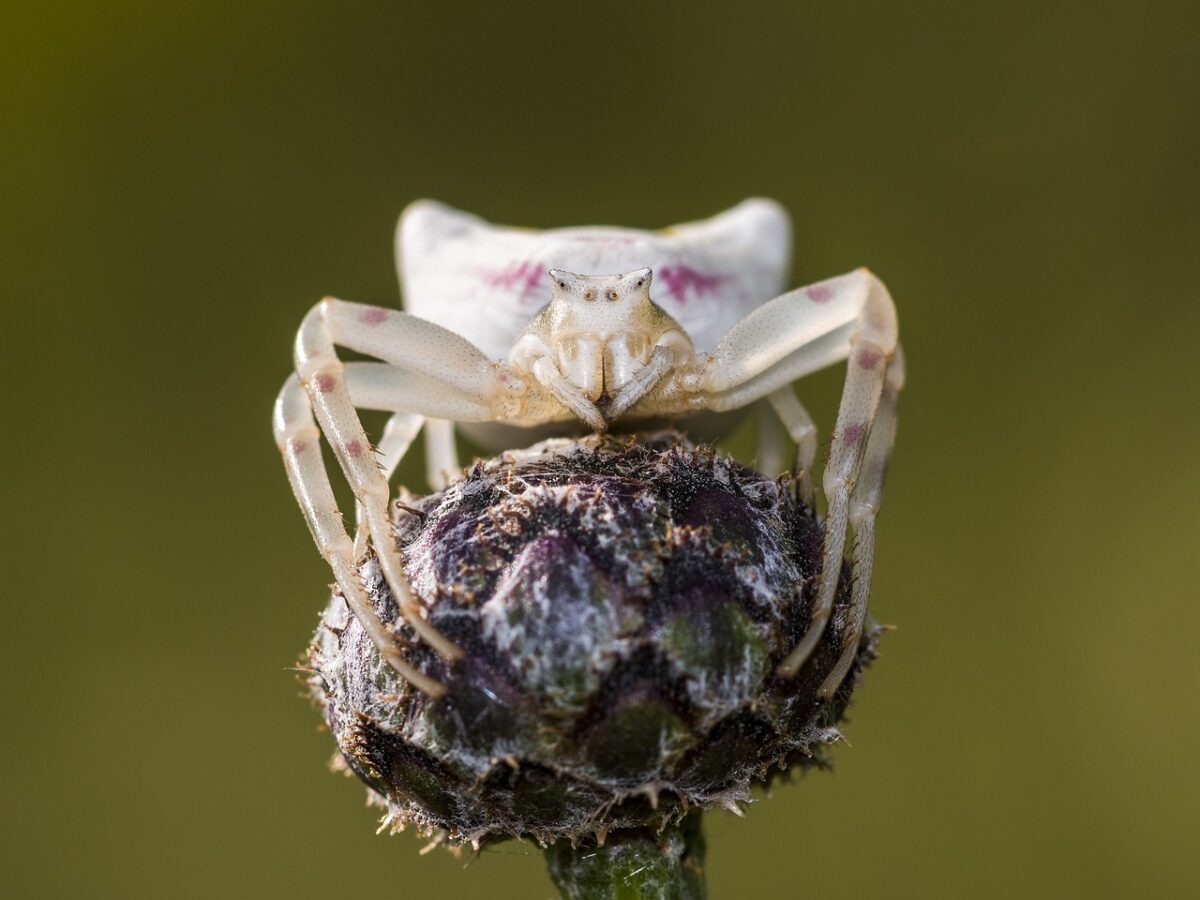
| Crab spiders range in size from 0.1 – 1 inch in length with a flat body, making them relatively small compared to other spider species. |
| Running Crab Spiders are usually small to medium-sized, ranging from 0.2 – 0.6 in body length. They have flattened bodies with long, thin legs and a distinct crab-like look that gives them their name. |
| They are known to be ambush predators, lying low and waiting for their prey, consisting of small insects and other spiders. |
| They have venom used to immobilize their prey. This venom is not harmful to humans, and a bite from a crab spider is usually not painful or dangerous. |
| These spiders are known for their agility and quick movements; they can move in any direction, even backward, making them challenging to catch. |
Conclusion
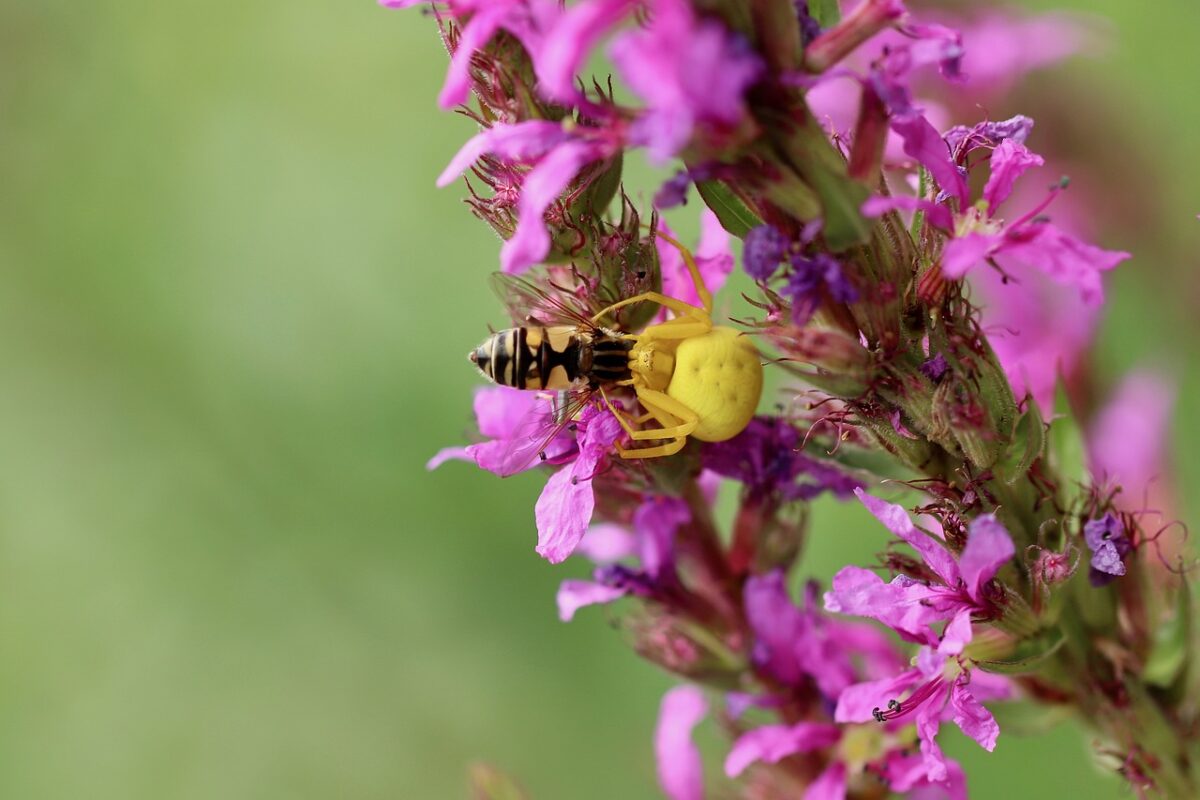
Crab spiders are fascinating and essential creatures in the ecosystem. From their unique appearance to their effective hunting strategies, they are an integral part of the food chain. By understanding their biology, behavior, and importance, we can better appreciate and protect these incredible spiders.
Thank you for reading this article! If this has spiked your interest in spiders, take a look at our post on Wolf Spider Bites or the Top 10 Deadliest Spiders.
Join our Forum for free today!


